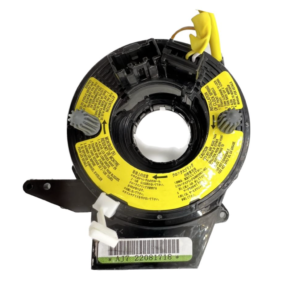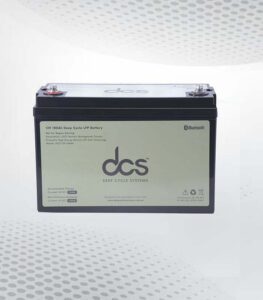Food preservation has been an essential part of human history, allowing us to enjoy seasonal flavors year-round and minimize waste. As we continue to seek healthier lifestyles, preserving food effectively becomes even more important. Enter the dehydrator machine—a game-changer in the world of food preservation. This innovative appliance not only helps you save your favorite fruits, vegetables, and herbs but also opens up a realm of culinary creativity.
The Rise of Dehydrator-machines
The popularity of dehydrator-machines has surged in recent years. More people are seeking healthier and more sustainable food preservation methods. As awareness grows about the importance of nutrition, home cooks are turning to these devices. They offer a simple way to extend the shelf life of fruits, vegetables, and even meats without losing essential nutrients. Dehydrators have evolved significantly over time. Modern models come with advanced features like temperature control and timers, making them user-friendly for everyone from novices to seasoned chefs.
This shift towards self-sufficiency is also notable. With a dehydrator-machine at home, individuals can reduce waste by preserving surplus produce. It’s not just about saving money; it’s a creative outlet that encourages culinary experimentation. From homemade snacks to convenient meal prep options, dehydrators play an integral role in contemporary kitchens today. This trend reflects broader shifts toward mindful eating and health-conscious living.
Benefits of Using a Dehydrator-machine
Using a dehydrator-machine opens up a world of culinary possibilities. It preserves the natural flavor and nutrients of fruits, vegetables, and even meats. This method locks in essential vitamins while reducing food waste. One standout benefit is convenience. You can prepare snacks ahead of time, making it easy to grab healthy options on busy days. Think dried apples or homemade jerky for quick energy bursts. Cost savings also make dehydrators appealing.
Buying bulk produce and drying it yourself cuts grocery bills significantly compared to store-bought snacks. Another advantage is versatility. From creating your own spices to preparing trail mixes, the uses are limitless. Plus, it’s an eco-friendly choice that minimizes packaging waste typically associated with processed foods. With minimal effort, you transform ordinary items into shelf-stable treasures that enhance your cooking and snacking experience.
Different Types of Best Food Dehydrator
When it comes best food dehydrator, variety is the name of the game. You can find options ranging from compact models perfect for beginners to more advanced versions designed for seasoned food preservers.
Stackable tray dehydrators
Are compact and affordable, with trays stacked vertically, making them ideal for smaller spaces and simpler drying tasks.
Tray and fan dehydrators
Use a fan for airflow and a heating element, providing more even drying and typically offering better efficiency for larger batches.
Horizontal airflow dehydrators
Are designed with a fan at the back, promoting uniform heat distribution and preventing food from sticking together, making them great for drying delicate foods like herbs or meats.
Solar dehydrators
utilize natural sunlight for energy-efficient drying, making them an eco-friendly option for those living in sunny climates.
How to Choose the Right Dehydrator for Your Needs?
Choosing the right dehydrator-machine can feel overwhelming with so many options available. Start by considering your food preservation goals. Are you drying fruits, vegetables, or jerky? Different foods require different temperatures and airflow. Next, think about capacity. If you’re processing small batches for personal use, a compact model might suffice. For larger families or those who like to stock up, consider a unit with multiple trays.
Ease of use is another important factor. Look for features such as digital controls and timers that simplify the drying process. Energy efficiency matters too; some models use less power while providing excellent results. Additionally, check reviews to gauge reliability and performance from other users’ experiences. Ensure it fits your budget without compromising quality—investing in a reputable brand can save money in the long run through durability and effectiveness.
Creative Ways to Use a Dehydrator for Food Preservation
A dehydrator-machine unlocks a world of culinary creativity. Beyond the basics of drying fruits and vegetables, it can transform your kitchen adventures. Try making homemade jerky using lean meats and flavorful marinades. The result is a protein-packed snack that’s perfect for on-the-go munching. Herbs are another fantastic option. Drying basil, thyme, or rosemary intensifies their flavors. Store them in jars for an aromatic boost to any dish.
Consider fruit leathers as well. Blend pureed fruit with honey or agave syrup, spread it thinly on trays, and watch it become a chewy treat that’s naturally sweetened. Even flowers aren’t off-limits! Dehydrate edible blooms like nasturtiums or pansies for stunning garnishes in salads or desserts. Experiment with different combinations; you might discover unexpected favorites that elevate your meals while preserving seasonal abundance.
Transforming Traditional Methods with Commercial Dehydrators Australia
Traditional food preservation methods like canning or pickling have served us well for generations. However, they often require extensive time and effort, not to mention specific skills. Enter the commercial dehydrators Australia—a game changer in the world of preserving food. Dehydrators simplify the process by allowing you to dry fruits, vegetables, and herbs with minimal fuss. Just slice your produce, arrange it on the trays, set the temperature, and let technology do its magic.
This method retains more nutrients compared to traditional techniques that might involve boiling or high heat. It also eliminates the need for added sugars or preservatives found in many canned goods. With a dehydrator-machine at your disposal, you gain versatility that’s hard to replicate through conventional means. Snack on dried mangoes or sprinkle powdered kale onto dishes effortlessly—options are endless!
Maintenance and Care Tips for Your Dehydrator-machine
Keeping your dehydrator-machine in top shape is essential for optimal performance. Start by regularly cleaning the trays and filters after each use. Warm, soapy water works wonders; just avoid abrasive sponges that could scratch the surfaces. Inspect the seals around doors or lids for any wear and tear. A tight seal ensures efficient drying and energy savings. If you notice any cracks or damage, consider replacing them promptly.
Periodic checks of the heating element can help maintain consistent temperatures during operation. Dust buildup can hinder performance, so a gentle wipe with a dry cloth will keep things running smoothly. Store your dehydrator in a cool, dry place when not in use to prolong its lifespan. Following these simple maintenance tips will ensure your dehydrator remains an invaluable tool in your kitchen arsenal for years to come.
Choosing the Right Dehydrator: Features to Consider
When selecting a dehydrator-machine, several features come into play. First and foremost, consider the capacity. If you plan to preserve large batches of food, a model with multiple trays will suit your needs better. Temperature control is another crucial factor. Look for machines that offer adjustable settings. This flexibility allows you to dry different types of foods effectively.
Energy efficiency can’t be overlooked either. Choose models designed for lower energy consumption while still delivering great results. Noise levels matter too—some dehydrators operate quietly while others can be quite loud during use. Think about ease of cleaning. Removable and dishwasher-safe parts make maintenance simpler and keep your dehydrator in top condition longer. These features collectively enhance your experience and ensure successful food preservation every time.
How a Dehydrator-machine Works: The Science of Drying Food
A dehydrator-machine operates on a simple yet effective principle: removing moisture from food. This process inhibits the growth of bacteria, yeast, and mold. The device uses controlled heat and airflow to facilitate drying. When food is placed inside, warm air circulates around it, evaporating water content. Lower humidity levels help retain flavor and nutrients. Temperature settings are crucial as different foods require specific heat levels for optimal dehydration. Fruits might need lower temperatures compared to meats or vegetables.
Most machines have multiple trays that allow simultaneous drying of various items without cross-contamination of flavors. This method not only preserves food but also intensifies its taste while creating lightweight snacks perfect for storage or travel. The science behind dehydrators combines technology with traditional preservation techniques, making them a valuable addition to any kitchen.
conclusion
Embracing the use of a dehydrator machine can revolutionize your approach to food preservation. With its ability to lock in flavors and nutrients, it opens up endless possibilities in the kitchen. Imagine transforming fruits into delightful snacks or creating homemade jerky packed with protein. The convenience of storing dried foods for later use is simply unmatched. As you explore different types of dehydrators, consider how each feature meets your unique needs.
FAQs
What is a dehydrator machine?
A dehydrator machine is an appliance designed to remove moisture from food. By using controlled heat and airflow, it helps preserve fruits, vegetables, meats, and herbs for long-term storage.
How long does it take to dehydrate food?
The time required varies depending on the type of food and its thickness. Generally, most foods can be dried within 4 to 12 hours. It’s best to check periodically until you achieve your desired texture.
Can I dehydrate any type of food?
While many foods can be successfully dehydrated—like apples or tomatoes—some items do not fare well in this process. Foods with high fat content (such as avocados) may spoil faster when dried.
Are there safety concerns with using a dehydrator-machine?
Using a dehydrator is generally safe as long as you follow proper guidelines for temperature and drying times. Always ensure that the food is adequately prepped before dehydration for optimal preservation results.
| Related Business Listings |
| Contact Directory |
| Local Business Profiles |




